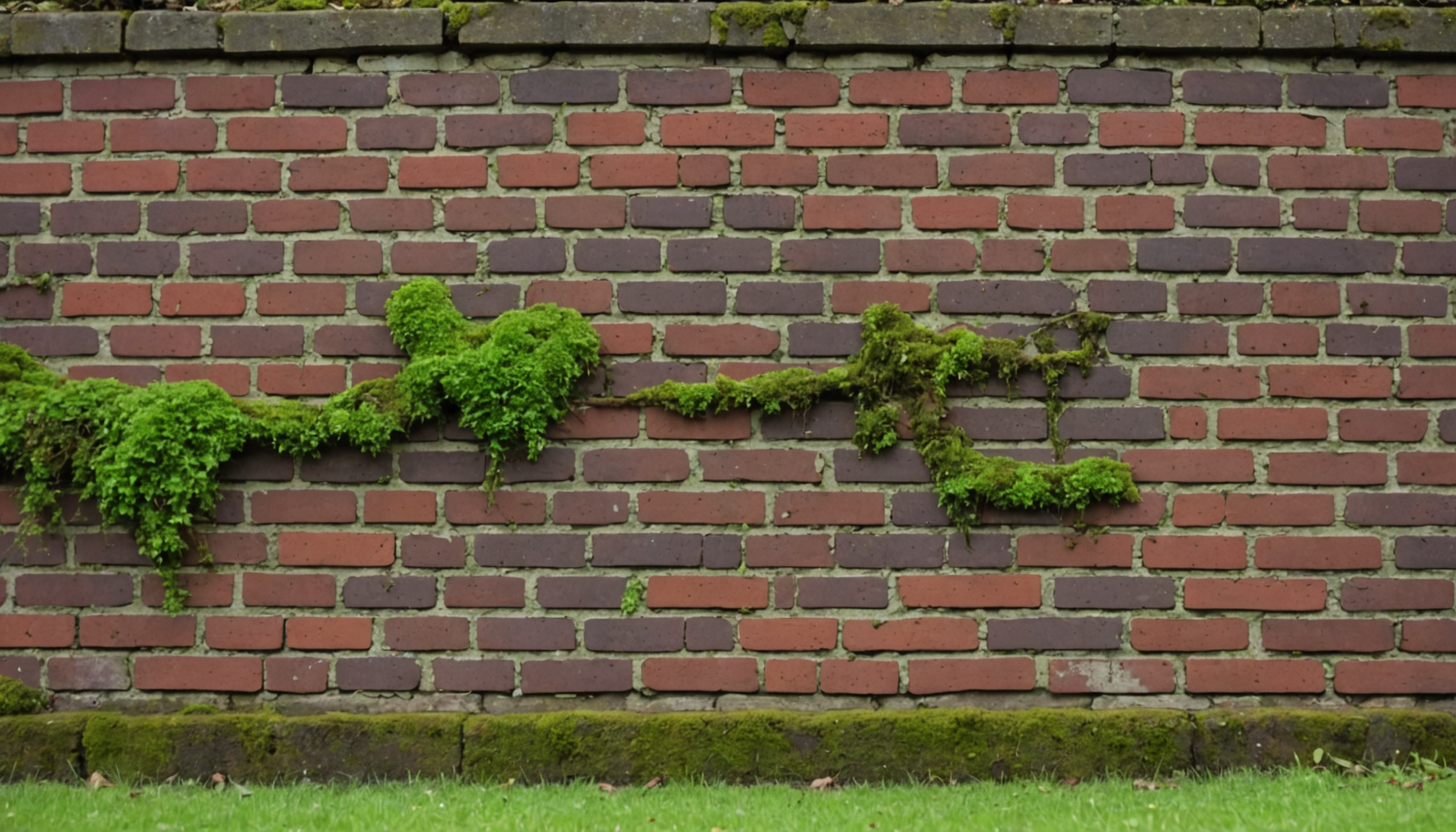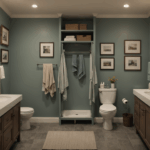When embarking on the process of purchasing a home, whether for the first time or as a seasoned buyer, one of the critical aspects not to overlook is the external structure of the property. Checking the exterior is essential because it forms the first barrier against environmental elements and contributes to the long-term durability and value of the home. When assessing a property, a thorough exterior inspection can alert you to potential issues that may require immediate attention or could serve as negotiation points during the purchasing process.
Start by examining the condition of the exterior walls. Different materials, such as brick, vinyl siding, stucco, or wood, each have their maintenance needs and potential signs of wear. Look for cracks, rot, or mold, which could indicate underlying structural issues or water damage.
Furthermore, ensure that wall cladding is properly installed and in good condition to guarantee effective insulation and moisture resistance.
Another crucial component is the foundation. While a comprehensive evaluation of the foundation’s condition often requires a professional, there are visible signs you can check yourself. Look out for cracks or gaps that could suggest settling, shifting, or water infiltration. A solid foundation is vital for the structural integrity of the home.
Moving on to windows and doors, verify that they are in good condition and provide a proper seal. This can improve energy efficiency by preventing air leaks, thus reducing heating and cooling costs. Check for any cracks in the glass, ensuring they open and close smoothly and lock securely for added safety.
- Walls: Check for cracks, rot, or mold.
- Foundation: Look for visible cracks or shifts.
- Windows and Doors: Ensure they seal properly, function smoothly, and secure well.
Evaluate the condition of gutters and downspouts. These components play an essential role in directing rainwater away from the home’s foundation and preventing erosion. Ensure they are securely attached, free from debris, and sloped correctly for optimal water flow. Inspect for signs of rust or leaks which can lead to more significant damage over time.
When inspecting the exterior, don’t forget the driveway and walkways. These surfaces should be in good condition without significant cracks or uneven areas that could pose tripping hazards. In regions with frequent freeze-thaw cycles, small imperfections can quickly become larger concerns. Properly maintained walkways also contribute to the overall appearance and curb appeal of the property.
Last but not least, evaluate any decks, porches, or patios. These outdoor spaces should be stable, free from rot, and well-secured to the home. Pay attention to railings and steps, ensuring they are robust and in good repair. These areas should enhance the living space of the home without presenting safety hazards.
| Feature | Signs to Check | Potential Issues |
| Walls | Cracks, rot, mold | Structural damage, moisture issues |
| Foundation | Visible cracks or gaps | Shifting or settling issues |
| Windows and Doors | Seal, function, security | Energy inefficiency, security risk |
| Gutters and Downspouts | Attachments, cleanliness, gradient | Rust, leaks, foundation damage |
| Driveway and Walkways | Cracks, uneven surfaces | Tripping hazards, potential worsening with weather |
Completing a comprehensive exterior inspection provides valuable insights into the home’s condition, helping pinpoint both minor and significant issues that could impact your decision-making process. Identifying these concerns early on allows prospective buyers to negotiate with confidence or plan for future repairs and maintenance needs effectively.
interior safety checks
 Once inside the home, conducting a thorough safety check is paramount to ensuring a secure and comfortable living environment. Various elements contribute to the overall safety of a home, and each should be reviewed carefully. Follow these steps to conduct a comprehensive interior safety check:
Once inside the home, conducting a thorough safety check is paramount to ensuring a secure and comfortable living environment. Various elements contribute to the overall safety of a home, and each should be reviewed carefully. Follow these steps to conduct a comprehensive interior safety check:
- Smoke and Carbon Monoxide Detectors:
- Verify the presence of smoke detectors in key areas, including each bedroom and hallway. Ensure a detector is placed on every floor, including basements and attics if applicable.
- Test each device to confirm they are working correctly. Smoke detectors typically have a test button—pressing it should emit a loud alert sound.
- Inspect carbon monoxide detectors as well, particularly near sleeping areas and in rooms with gas appliances. Similar to smoke detectors, test each one to ensure functionality.
- Electrical Outlets and Switches:
- Check for exposed wiring or loose connections that could pose an electric shock hazard.
- Ensure all outlets have cover plates securely fastened and examine the condition of light switches.
- If the property is an older home, consider testing outlets with a circuit tester to ensure they are properly grounded. Pay attention to the presence of GFCI (Ground-Fault Circuit Interrupter) outlets in high-moisture areas like kitchens and bathrooms for added safety.
- Staircases and Railings:
- Inspect staircases for any signs of damage or wear, such as loose steps or carpeting that could lead to slips or falls.
- Ensure railings are secure and at an appropriate height according to building codes. They should withstand a reasonable amount of pressure to ensure safety.
- Fireplaces and Chimneys:
- Examine the fireplace hearth and surround for cracks or damage. A well-maintained fireplace reduces the risk of fire hazards.
- If applicable, ensure the chimney is clear of obstructions and undergoes regular cleaning to prevent soot and creosote buildup.
- Windows and Exit Routes:
- Check that all windows open and close easily, providing a clear and quick escape route in case of emergency.
- Ensure windows are not painted shut and keep latches and locks in good working condition for security and ease of use.
- Basement and Crawl Spaces:
- In basements and crawl spaces, assess for any water damage or signs of mold that might affect air quality.
- Evaluate ventilation, particularly if the space might be used for storage or additional living purposes.
Conducting a comprehensive internal safety check provides peace of mind and safeguards against potential hazards lurking within a home. Identifying these risks early on equips you with the knowledge to address them effectively, ensuring a safe environment for you and your family. This attention to detail not only promotes safety but also helps maintain the value and longevity of the home.
plumbing and electrical overview
 When it comes to evaluating plumbing systems during a home inspection, several essential aspects require careful attention. A well-maintained plumbing system is crucial for a home’s functionality, and even minor issues can lead to significant complications if left unaddressed.
When it comes to evaluating plumbing systems during a home inspection, several essential aspects require careful attention. A well-maintained plumbing system is crucial for a home’s functionality, and even minor issues can lead to significant complications if left unaddressed.
Begin with an assessment of the water pipes. Examine visible piping for signs of corrosion, leaks, or rust, especially if the pipes are made of older materials like galvanized steel, which can be prone to these issues. Modern homes typically use copper or PEX piping, known for their durability and resistance to damage. Check under sinks and around fixtures for leaks, as these areas are common sites for moisture build-up, which may lead to mold and water damage over time.
Water pressure and flow are telltale signs of the plumbing system’s health. Test multiple faucets and ensure that water pressure is consistent and sufficient. Inconsistencies could indicate issues like clogged pipes or problems with the pressure regulator. Additionally, observe how quickly water drains to identify potential blockages or faulty drainage systems.
The water heater is another critical component. Determine the age and capacity of the water heater to ensure it meets the home’s needs. Inspect for signs of rust around the tank and water connections, and check for any leakage. If the home has an older model, consider its efficiency and potential replacement costs.
Moving on to the electrical system, safety and functionality are paramount. Check the main electrical panel for proper labeling and ensure it has sufficient capacity to support modern electrical needs. Look for any outdated or over-fused breakers that could pose safety risks. The presence of improperly grounded circuits or amateur wiring jobs are red flags and might necessitate professional evaluation.
Examine all visible wiring for signs of wear or improper installations. Pay special attention to areas where rodents could damage wires, such as attics or basements. Also, confirm that proper grounding and bonding are in place, as this reduces the risk of electrical shock.
Switches and outlets should be checked for function and security. Test each outlet and switch within the home, noting any that are warm to the touch which could signal overheating or faulty wiring. For homes with a vintage electrical system, ensure that they are equipped with circuit interrupters where necessary, particularly in areas prone to moisture, like kitchens and bathrooms.
Finally, evaluate the presence and condition of any installed safety devices, such as smoke detectors with hardwiring and CO alarms that could be linked to the electrical system. These should be in optimal working order to ensure the safety of all occupants.
Thoroughly inspecting the plumbing and electrical systems offers significant benefits, providing confidence in the home’s safety, efficiency, and reducing the risk of costly repairs or potentially dangerous failures in these critical areas.
heating and cooling system evaluation
 When examining the heating and cooling systems in a prospective home, it’s important to ensure that they are both efficient and capable of maintaining a comfortable living environment. Begin by identifying the types of systems installed in the home—commonly encountered options include central HVAC systems, boilers, and heat pumps. Each of these has unique features and potential issues, so understanding the setup is the first step in a thorough evaluation.
When examining the heating and cooling systems in a prospective home, it’s important to ensure that they are both efficient and capable of maintaining a comfortable living environment. Begin by identifying the types of systems installed in the home—commonly encountered options include central HVAC systems, boilers, and heat pumps. Each of these has unique features and potential issues, so understanding the setup is the first step in a thorough evaluation.
For homes with central heating and cooling systems, inspect the HVAC unit closely. Check the age of the unit, as older systems may be less efficient and nearing the end of their useful life, often requiring more frequent repairs. The average lifespan of a well-maintained HVAC system is typically around 15 to 20 years. Confirm that the system receives regular maintenance, and review any service records if available. A properly maintained system is likely to be more reliable and efficient.
Additionally, check the condition of the ductwork connected to the central system. Look for any visible signs of wear, damage, or gaps that could lead to air leaks. Efficient ductwork is critical for maintaining indoor air quality and ensuring that heated or cooled air reaches all areas of the home effectively. If possible, run both the heating and cooling functions to check for strange noises or odors, which can indicate potential mechanical issues or the need for servicing.
Boilers, often found in older homes, should be inspected for any leaks or rust, especially around seams and joints. Ensure the pressure levels are within the recommended range and that all safety valves and pressure gauges are functioning correctly. Boilers require regular servicing to maintain safety and efficiency, so verify that it has been part of a routine maintenance schedule.
Heat pumps are another versatile option, providing both heating and cooling in one unit. Inspect the exterior unit, ensuring it’s free of debris or obstructions that could affect performance. Listen for unusual noises when the heat pump is operating, as this might suggest mechanical issues. Given their reliance on electrical systems, make sure the wiring and power supply are securely in place and without damage.
Thermostats play a vital role in regulating the home’s temperature efficiently. Consider upgrading to a programmable or smart thermostat if the existing one lacks these features, as they can significantly enhance energy efficiency by automatically adjusting settings based on occupancy and preferences.
Finally, assess any supplemental heating elements, like electric baseboards or wood-burning stoves. Check for proper installation and ensure that they operate effectively without posing a fire hazard. Wood stoves, for example, should have adequate clearance from combustibles and be connected to a well-maintained chimney or flue.
By taking a closer look at the heating and cooling systems, buyers can ensure they are investing in a home that provides comfort through all seasons, without unexpected operational costs or undue environmental impact. Familiarity with the home’s systems equips you with valuable information, whether it’s negotiating repairs and upgrades or planning efficient maintenance strategies moving forward.
roofing and attic review
 A detailed assessment of the roofing and attic components is crucial when considering a home’s overall condition and structural integrity. The roof is one of the primary defenses against the elements, and the attic plays an essential role in ventilation and insulation. Begin your examination with the roofing material itself. Whether it’s asphalt shingles, metal, tile, or wood, each has different durability, vulnerabilities, and maintenance requirements. Inspect the shingles or other materials for signs of wear such as curling, missing pieces, or granule loss. Any indication of such damages could mean the roof requires repair or replacement.
A detailed assessment of the roofing and attic components is crucial when considering a home’s overall condition and structural integrity. The roof is one of the primary defenses against the elements, and the attic plays an essential role in ventilation and insulation. Begin your examination with the roofing material itself. Whether it’s asphalt shingles, metal, tile, or wood, each has different durability, vulnerabilities, and maintenance requirements. Inspect the shingles or other materials for signs of wear such as curling, missing pieces, or granule loss. Any indication of such damages could mean the roof requires repair or replacement.
The roof’s flashing, particularly around chimneys, skylights, and vent pipes, needs careful inspection. Ensure it is properly sealed, with no signs of rust or lifting, as these are points where water could potentially penetrate, leading to leaks or water damage inside the home. Just as important is checking the gutters and downspouts again from this perspective, ensuring that they are free of blockages and effectively diverting water away from the house structure.
Inside the attic, begin by checking the insulation. Appropriate levels and proper installation are essential to maintaining energy efficiency; insufficient insulation might lead to increased heating and cooling costs. Examine for any signs of water intrusion, such as wet spots on insulation or wood, which may indicate a leaking roof. Mold or mildew presence can point to insufficient ventilation or previous leaks that were not addressed, and should be considered a red flag requiring expert evaluation.
Ventilation is another key factor in the attic area. Ensure vents are unobstructed and operating effectively to allow moisture and heat to escape. Without proper ventilation, attics can trap heat and moisture, leading to issues such as mold growth, reduced lifespan of roofing materials, and added strain on heating and cooling systems. Check the condition of all roof vents and fans, ensuring they function efficiently.
The framework of the attic also deserves attention. Look for signs of structural compromise, such as sagging joists or rafters, which could indicate serious issues such as heavy load stress or (in older homes) potential termite damage. Pay careful attention to any signs of wood rot, which might suggest long-term exposure to moisture.
These thorough inspections of the roof and attic reveal potential areas of concern that might need immediate addressing or ongoing maintenance. By understanding the current state of a home’s roof and attic, buyers can negotiate repairs with sellers effectively and budget for future maintenance, securing the property’s value and structural reliability.
In summary, a comprehensive home inspection empowers homebuyers to make informed decisions by uncovering potential issues and understanding the maintenance requirements of a property. By closely examining each critical component—from the exterior, interior safety features, plumbing and electrical systems to heating, cooling, and roofing elements—buyers ensure peace of mind and lay the groundwork for a secure investment. These insights not only facilitate negotiations but also aid in planning future upkeep, ultimately enhancing the longevity and comfort of the home.

